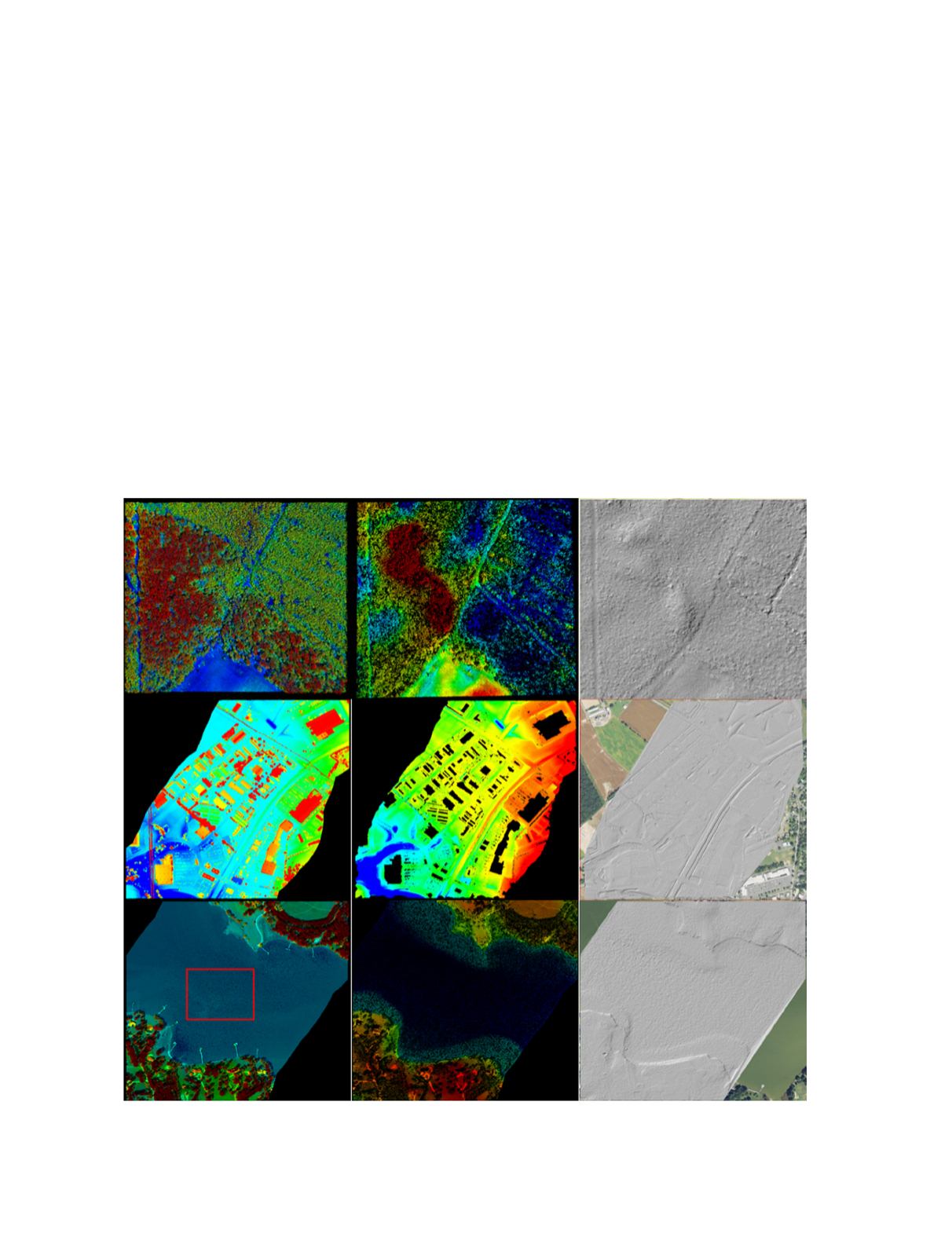
458
July 2016
PHOTOGRAMMETRIC ENGINEERING & REMOTE SENSING
F
iltering and
DEM G
eneration
All three datasets were subjected to filtering process to create
a digital elevation model (DEM). We extracted the ground
points using a filter implemented in the LAStools (https://
rapidlasso.com/). The number of ground points after filtering
is also listed in Table 3. Figure 3 shows the input point clouds
(left), the filtered ground points (middle), and the shaded 1 m
resolution DEM (right) for the three datasets. As shown in
Table 3, the SPL Forest dataset has 494,357 (35.23% of total)
ground points at a density of 3.6 points per sq. meter. For the
Urban dataset, 12,309,811 (60.39%) points are classified as
ground, yielding a ground point density of 10.1 points per sq.
meter. For the Bathy dataset, there are 789,451 points left
as ground, leading to ground point density 1.1 points per sq.
meter.
Figure 3. Point clouds (left), ground points (middle) and shaded 1 m DEM (right) from the SPL for the Forest (top), Urban (middle) and Bathy
(bottom) datasets.
Point clouds
Ground points
Shaded DEM
SPL DEM
vs
. L
inear
L
idar
DEM
(F
orest
)
In order to make a comparative analysis, whenever available,
we tried to download the point clouds collected by the linear
lidar systems from the U.S. Geological Survey (USGS)
Earth Explorer website (
/). We
intended to use such point clouds and their derived products
as a reference (thereafter called reference DEM) to compare
the properties with the SPL data. It turned out that, among
the three areas, only the Forest one has such linear lidar point
cloudsavailableonline.Twofiles‘MD_Statewide_2003_000798.
las’ and ‘MD_Statewide_2003_000776.las’ were found, both of
which were collected in June 2003. They were then merged
for our study, yielding a total of 119,037 points in the linear
lidar dataset with a point density of 0.82 points per sq. meter
at a point spacing 1.10 m. Figure 4 shows the point cloud,
filtered ground points and the 1 m shaded DEM from the
linear lidar over the Forest area. Two dark gaps (labeled by
an oval) are visible at the right side of the point clouds, an
effect introduced when merging the two files.


